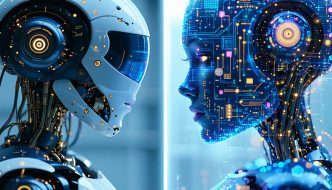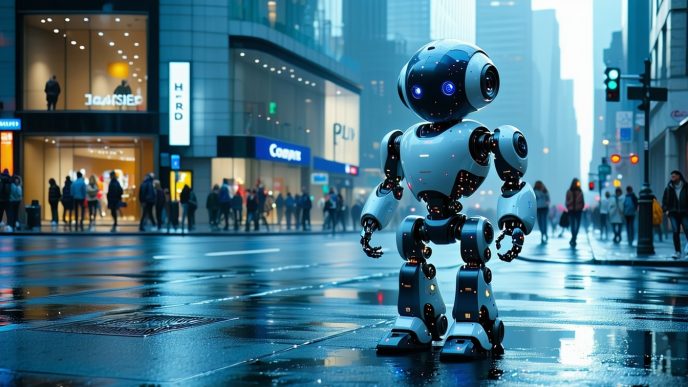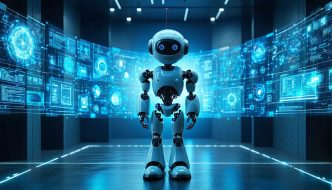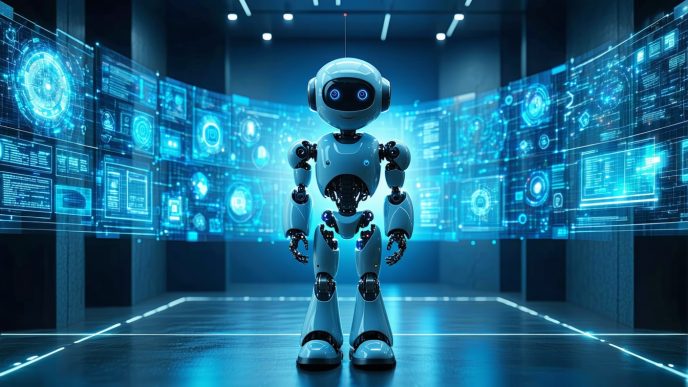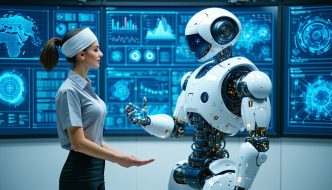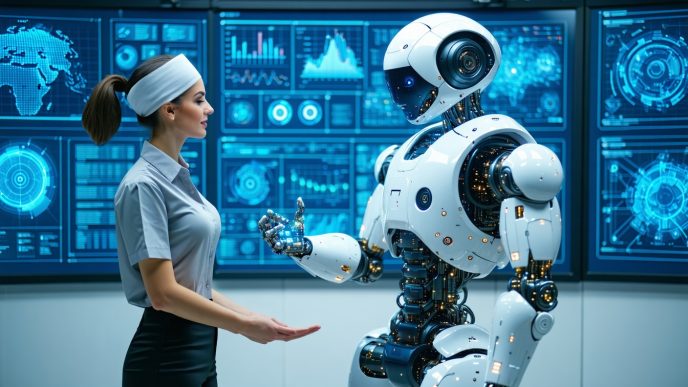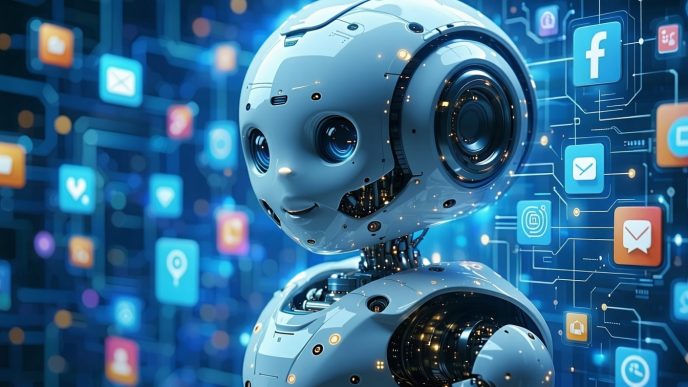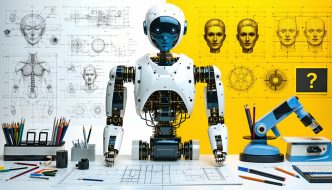Understanding Humanoid Robots and AI Assistants
In the evolving landscape of technology, understanding the distinctions and purposes of humanoid robots and AI assistants is essential.
Definition and Purpose
Humanoid robots are designed to resemble the human form and often exhibit characteristics such as mobility, dexterity, and the ability to interact with people in a natural manner. Their primary purpose is to perform tasks that range from assisting in elder care to engaging in environments that require human-like interaction, such as homes or healthcare facilities.
On the other hand, AI assistants, commonly known as virtual assistants, are software-based applications that provide users with various functions through voice commands and interactions. They can answer questions, manage schedules, control smart home devices, and provide information derived from the internet. While they are not physical entities like humanoid robots, they serve to enhance user engagement with technology in a seamless manner.
Humanoid Robots vs AI Assistants: Overview
A comparative overview can help clarify the differences between these two technologies.
| Feature | Humanoid Robots | AI Assistants |
|---|---|---|
| Form | Physical robots resembling humans | Software applications (not physical) |
| Interaction | Physical presence, can move and engage | Voice interaction |
| Tasks | Physical tasks (e.g., lifting, moving) | Managing information, scheduling |
| Adaptability | Can learn from environment and enhance skills | Use machine learning for user preferences |
| Use Cases | Healthcare, hospitality, personal assistance | Home automation, information retrieval |
This table illustrates the core differences, showcasing how humanoid robots engage in tangible environments while AI assistants operate within digital frameworks. Understanding these differences can aid in recognizing their respective roles in enhancing daily life and work environments. For more detailed discussions on specific humanoid robots, you might be interested in learning about humanoid robots for home use or the latest innovations like the Tesla Optimus robot.
Humanoid Robots
Humanoid robots have gained popularity as technology advances, showcasing their unique characteristics and diverse applications across various sectors. Understanding these elements highlights the distinction between humanoid robots and AI assistants.
Characteristics of Humanoid Robots
Humanoid robots are designed to resemble humans in both appearance and behavior. They often possess the following key characteristics:
| Characteristic | Description |
|---|---|
| Physical Form | An external structure similar to the human body, including a head, arms, and legs. |
| Mobility | Ability to walk, run, or perform other locomotion tasks through advanced humanoid robot locomotion systems. |
| Interaction | Equipped with technology, such as voice interfaces in humanoid robots, to engage in conversations and respond to human cues. |
| Sensing | Incorporates various sensors to perceive the environment, enabling navigation and interaction. |
| Artificial Intelligence | Utilizes AI models to showcase learning and adaptation capabilities, allowing for personalized interaction with users. |
These features combine to create robots capable of performing various tasks that parallel human abilities, making them suitable for numerous applications.
Applications and Industries Using Humanoid Robots
Humanoid robots are finding a place in multiple industries, demonstrating their versatility and functionality. The following table outlines some common applications and the sectors they serve.
| Application | Industry | Examples |
|---|---|---|
| Elder Care | Healthcare | Robots providing companionship and assistance in daily activities. Humanoid robots in elder care. |
| Security | Security Services | Robots that patrol areas and monitor for suspicious activities. Humanoid robots for security. |
| Education | Educational Institutions | Robots that assist teachers or engage with students in interactive learning. Humanoid robots for education. |
| Home Use | Domestic Services | Robots performing household tasks such as cleaning and cooking. Humanoid robots for home use. |
| Customer Service | Retail and Hospitality | Robots that greet customers, answer questions, and assist with transactions. |
These applications illustrate the potential for humanoid robots to enhance efficiency and provide valuable support in different environments. The comparison of these robotic systems against AI assistants raises interesting discussions, such as the efficacy of their assistance in daily life and professional settings, further emphasizing the exploration of humanoid robots vs AI assistants.
AI Assistants
In the realm of technology, AI assistants serve a vital purpose, functioning as virtual helpers designed to make everyday tasks simpler and more efficient. They are distinct from humanoid robots but share similarities in their functionality.
Functions and Capabilities of AI Assistants
AI assistants come equipped with various functions that enhance user interaction and productivity. Some key capabilities include:
| Functionality | Description |
|---|---|
| Voice Recognition | AI assistants can understand and process spoken commands, allowing users to interact hands-free. |
| Task Management | They can schedule appointments, set reminders, and manage lists, helping users organize their daily activities. |
| Information Retrieval | AI assistants can search the internet for answers, providing users with quick access to information. |
| Home Automation | They can control smart home devices, such as lights and thermostats, creating a more automated living environment. |
| Personalized Responses | AI assistants can learn user preferences, adapting their responses and services accordingly. |
The integration of these functions allows AI assistants to interact seamlessly with users, providing assistance in various aspects of daily life. For further insights, check our article on humanoid robots for home use to see how they complement AI assistants in home environments.
Examples of Popular AI Assistants
There are several prominent AI assistants currently available, each with unique features and capabilities. Below is a table showcasing some well-known examples:
| AI Assistant | Main Features |
|---|---|
| Assistant A | Voice recognition, smart home control, scheduling |
| Assistant B | Multi-device integration, personalized recommendations |
| Assistant C | Language translation, task management, voice commands |
| Assistant D | Information retrieval, calendar integration, reminders |
These AI assistants are designed to enhance user experience by addressing specific needs and preferences. Exploring their capabilities can help users determine which one might best fit their lifestyle.
Understanding the distinctions between humanoid robots and AI assistants could provide valuable insights. For a deeper comparison, consider reading about [humanoid robots vs ai assistants].
Performance and Capabilities
When evaluating humanoid robots versus AI assistants, it is essential to understand their tasks, functions, limitations, and advantages. Each type of technology has its unique strengths and areas where it might struggle.
Tasks and Functions
Humanoid robots are designed to perform a wide range of tasks that often mimic human abilities. AI assistants, on the other hand, focus primarily on providing information and executing digital commands. Below is a comparison table showcasing the tasks and functions of both humanoid robots and AI assistants.
| Category | Humanoid Robots | AI Assistants |
|---|---|---|
| Physical Interaction | Can perform physical tasks | Limited to virtual tasks |
| Navigation | Capable of navigating physical spaces | Operate within a digital domain |
| Communication | Engage in conversation with humans | Respond to voice commands |
| Task Execution | Execute complex manual tasks | Perform computations and information retrieval |
| Environmental Interaction | Interact with objects and the environment | Interface with apps and online services |
| Learning and Adaptation | Can learn from experiences | Utilize AI algorithms for learning |
Humanoid robots are suitable for hands-on tasks, while AI assistants excel at digital interactions, such as answering questions or managing smart home devices.
Limitations and Advantages
Both humanoid robots and AI assistants have their own set of limitations and advantages. Understanding these can help users make informed choices based on their needs.
| Category | Humanoid Robots | AI Assistants |
|---|---|---|
| Advantages | Versatile in task execution | Ideal for quick information retrieval |
| Can operate in real-world environments | Highly accessible and user-friendly | |
| Capable of social interactions | Continuous updates and improvements | |
| Limitations | High development and maintenance costs | Limited physical interaction |
| Potential safety concerns when interacting with humans | Dependency on internet connectivity | |
| Restricted functionality in complex tasks | Limited emotional intelligence |
Humanoid robots can bridge the gap between human-like interaction and physical world engagement. However, their complexities come with high costs and needs for maintenance. On the other hand, AI assistants provide quick solutions for everyday tasks while being easy to use, but lack the ability to interact physically with their environment.
By comparing the performance and capabilities of humanoid robots and AI assistants, users can better understand which technology may best suit their specific requirements, whether that be for personal assistance, companionship, or handling complex tasks in various environments. For more insights, explore articles on humanoid robots for home use or robot emotions and ethics.
Interaction and Communication
Understanding how humanoid robots and AI assistants interact with users is essential in evaluating their effectiveness. Both types of technology aim to provide seamless communication, but they do so in different ways.
Human-like Interaction
Humanoid robots are designed to mimic human behaviors and facial expressions, providing a more relatable form of interaction. These robots often use advanced sensors and AI algorithms to recognize emotions and respond appropriately. This creates an engaging experience for users, as they can feel a sense of connection with the robot.
Many humanoid robots are equipped with features like gestures, eye contact, and body movements, which enhance their ability to communicate effectively. The implementation of such human-like traits helps in various environments, including healthcare, education, and companionship.
| Feature | Description |
|---|---|
| Gestures | Robots can use hand movements to emphasize communication. |
| Eye Contact | Maintaining eye contact can enhance user engagement. |
| Emotional Recognition | Some robots can detect user emotions through facial analysis. |
AI assistants, while powerful, primarily rely on voice interaction and textual responses. They utilize natural language processing (NLP) to understand and respond to user queries. While voice recognition technology has improved dramatically, the interaction may lack the human touch that humanoid robots can provide. For instance, AI assistants do not have physical presence or gestures, which limits the depth of their interaction.
Voice Recognition and Response
Voice recognition is a key component in the functionality of both humanoid robots and AI assistants. It allows users to communicate with the technology verbally, making it accessible and user-friendly.
Humanoid robots typically incorporate sophisticated voice recognition systems that enable them to understand a variety of accents and languages. This adaptability enhances user interaction, as the robots can follow commands and respond in real-time. Some humanoid robots can also adjust their speech patterns to match the user’s tone and style, thereby improving the overall communication experience.
| Capability | Humanoid Robots | AI Assistants |
|---|---|---|
| Accent Recognition | High | Moderate |
| Tone Adaptation | Yes | Limited |
| Language Support | Multiple languages | Multiple languages |
AI assistants also rely on advanced voice recognition technology to facilitate interactions. They interpret voice commands accurately, respond to questions, and execute tasks. However, the lack of physical presence and nuanced responses can make AI assistants feel less interactive compared to humanoid robots.
Both humanoid robots and AI assistants continue to evolve in terms of interaction and communication. The differences in their capabilities impact user experience, making the choice between the two based on the desired level of engagement and functionality. For further exploration of these technologies, refer to our articles on voice interfaces in humanoid robots and humanoid robots for companionship.
Customization and Adaptability
Humanoid robots and AI assistants exhibit significant levels of customization and adaptability, enhancing their interaction with users and their effectiveness in various applications.
Personalization Features
Personalization features play a crucial role in tailoring the experience of humanoid robots and AI assistants to meet individual user preferences. These features often include:
- Voice Selection: Users can choose from different voices and accents, making interactions more relatable.
- User Profiles: Systems may create unique profiles for different users, allowing personalized responses and tailoring to specific needs.
- Custom Commands: Users can set up unique commands or preferences for specific tasks, streamlining interactions.
Here is a table highlighting some personalization features across different humanoid robots:
| Feature | Humanoid Robots | AI Assistants |
|---|---|---|
| Voice Selection | Yes | Yes |
| User Profiles | Yes | Yes |
| Custom Commands | Limited | Extensive |
| Emotional Responses | Yes (to some extent) | Yes |
Learning and Adaptation Capabilities
Learning and adaptation are vital for transforming humanoid robots and AI assistants from simple machines into intelligent companions. They often utilize machine learning algorithms to enhance their capabilities:
- Data Learning: By analyzing user interactions, these systems improve their responses over time, leading to a more intuitive user experience.
- Contextual Understanding: They learn the context in which commands are given, allowing for more relevant responses based on specific situations.
- Behavioral Adaptation: Some robots can adapt their behavior according to the emotional cues or preferences of the user, which can enhance the relationship between human and robot.
The following table summarizes learning capabilities across humanoid robots compared to AI assistants:
| Capability | Humanoid Robots | AI Assistants |
|---|---|---|
| Data Learning | Advanced | Moderate |
| Contextual Understanding | Yes | Yes |
| Behavioral Adaptation | Yes | Limited |
| Learning Speed | Varies by model | Generally faster |
The combination of personalization features and adaptive learning make humanoid robots and AI assistants versatile in their application. As both technologies continue to evolve, their ability to customize and adapt will enhance the overall user experience, significantly influencing their effectiveness in various settings. For more about the differences between humanoids and AI, explore humanoid robots vs ai assistants.
User Experience and Interface
The user experience and interface design are essential aspects when comparing humanoid robots to AI assistants. These elements determine how effectively individuals can interact with and utilize technology in their daily lives.
Interface Design
Interface design involves creating an intuitive and user-friendly experience for the user. For humanoid robots, this means that the physical and digital interfaces allow for easy navigation and interaction. Humanoid robots often feature touch screens, voice commands, and physical buttons that provide multiple ways to communicate.
The aesthetics of the interface also play a significant role. It should be visually appealing and easily understandable to the user. Here is a comparison of interface design features between humanoid robots and AI assistants:
| Feature | Humanoid Robots | AI Assistants |
|---|---|---|
| Voice Interaction | Yes | Yes |
| Touchscreen | Yes | No |
| Physical Buttons | Yes | No |
| Visual Indicators | Yes (LEDs, screens) | Limited (LEDs) |
| Gesture Recognition | Frequently | Rare |
Humanoid robots often have the added advantage of physical presence, which can enhance user engagement compared to AI assistants that primarily operate through smartphone apps or speakers.
Ease of Use and Accessibility
Ease of use is crucial for encouraging adoption among users. Humanoid robots tend to be designed with various accessibility features, making them usable for a broader audience, including individuals with disabilities. They often come equipped with adaptive interfaces that can recognize user needs, potentially enhancing the experience for all users.
AI assistants, while highly capable, generally rely more on verbal commands, which can be limiting for those with hearing impairments. The following table summarizes the accessibility features of both types of technology:
| Accessibility Feature | Humanoid Robots | AI Assistants |
|---|---|---|
| Voice Control | Yes | Yes |
| Visual Feedback | Comprehensive | Minimal |
| Multimodal Interaction | Yes | Limited to voice |
| Language Variety | Yes | Yes |
| Compatibility with Assistive Tech | Often supported | Varies by platform |
For a more in-depth understanding of the various humanoid robots available for home use, consider exploring our article on humanoid robots for home use. This examination of user experience and interface highlights the complexities and considerations necessary when comparing humanoid robots with AI assistants for different tasks and environments.
Security and Privacy
Data Protection
As humanoid robots and AI assistants become more integrated into daily life, ensuring the protection of user data has become increasingly essential. Both types of technologies collect vast amounts of data to personalize and enhance their functionalities. This data often includes personal information, preferences, and interaction histories. Consequently, organizations must implement robust data protection measures to safeguard this sensitive information.
A comprehensive data protection strategy typically includes the use of encryption, secure data storage, and regular security audits. Additionally, users should be aware of the privacy policies associated with the devices they use, understanding how their data is collected, stored, and utilized.
| Data Protection Measure | Description |
|---|---|
| Encryption | Converts data into a secure format that cannot be easily read without a decryption key. |
| Secure Storage | Uses advanced security protocols to safeguard stored data from unauthorized access. |
| Regular Audits | Systematic checks to identify and rectify potential vulnerabilities in data handling practices. |
Vulnerabilities and Risks
Despite advancements in security protocols, vulnerabilities still exist in both humanoid robots and AI assistants. These technologies can be exposed to risks such as hacking, unauthorized access, and data breaches. Attackers may exploit these vulnerabilities to gain access to personal information or manipulate the devices’ functionalities.
Additionally, since these devices often rely on internet connectivity and cloud services, they are susceptible to vulnerabilities related to network security. Therefore, it is vital for users to be proactive in understanding potential risks and ensuring that their devices have the latest security updates installed.
| Common Vulnerabilities | Potential Risks |
|---|---|
| Hacking | Unauthorized access to personal data and control of device functions. |
| Data Breaches | Exposure of sensitive information due to inadequate security measures. |
| Network Security Flaws | Risks associated with unprotected Wi-Fi networks that can be exploited by attackers. |
By focusing on effective data protection measures and understanding the vulnerabilities associated with humanoid robots and AI assistants, users can better safeguard their personal information. For a deeper exploration of privacy concerns related to these technologies, read our article on humanoid robots and privacy.
